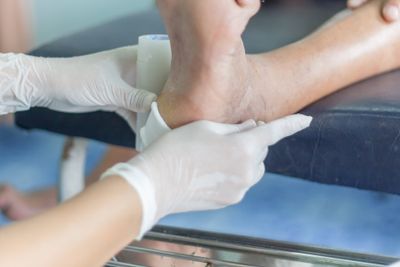Wound Care Specialist
Laredo Family Foot Center
knows how important it is to treat wounds as early as possible. If wounds or ulcers are left untreated they can lead to more serious complications. When you visit us you will know right away that you are in good hands. We make sure to give our full attention to each patient and make sure your questions are answered and your treatment is handled properly.
Laredo Family Foot Center accepts walk-ins and scheduled appointments. We know your schedule can be hectic and we understand that getting your wounds treated as soon as possible is a must, so we want to be as available to you as possible.
For more information or to scheduled an appointment, do not hesitate and give us a call today at (956) 712-FEET (3338).





